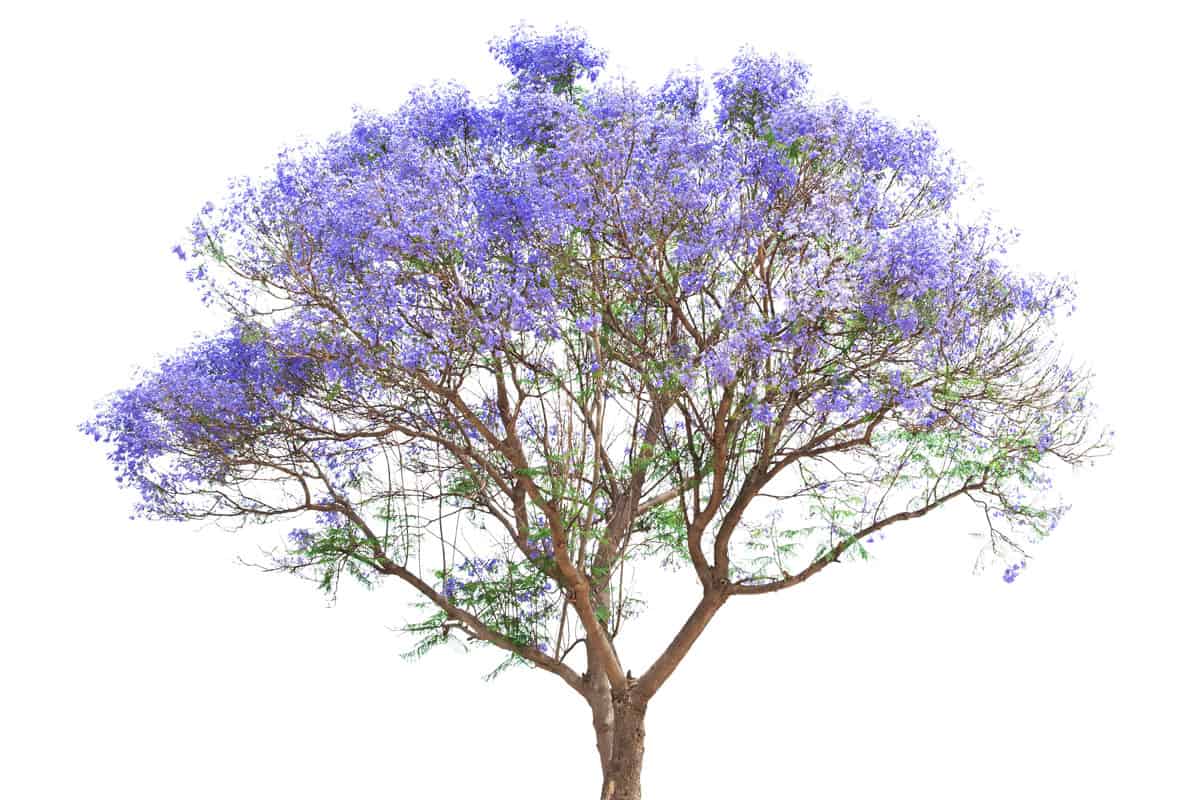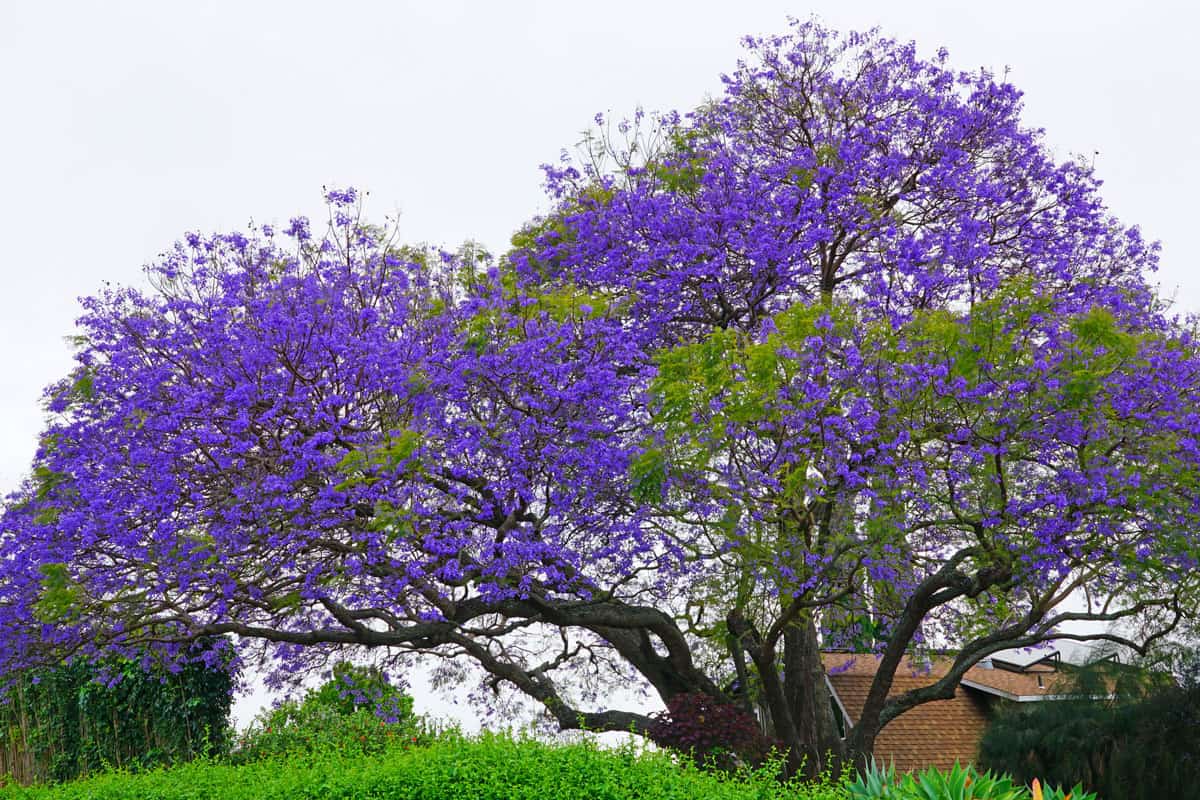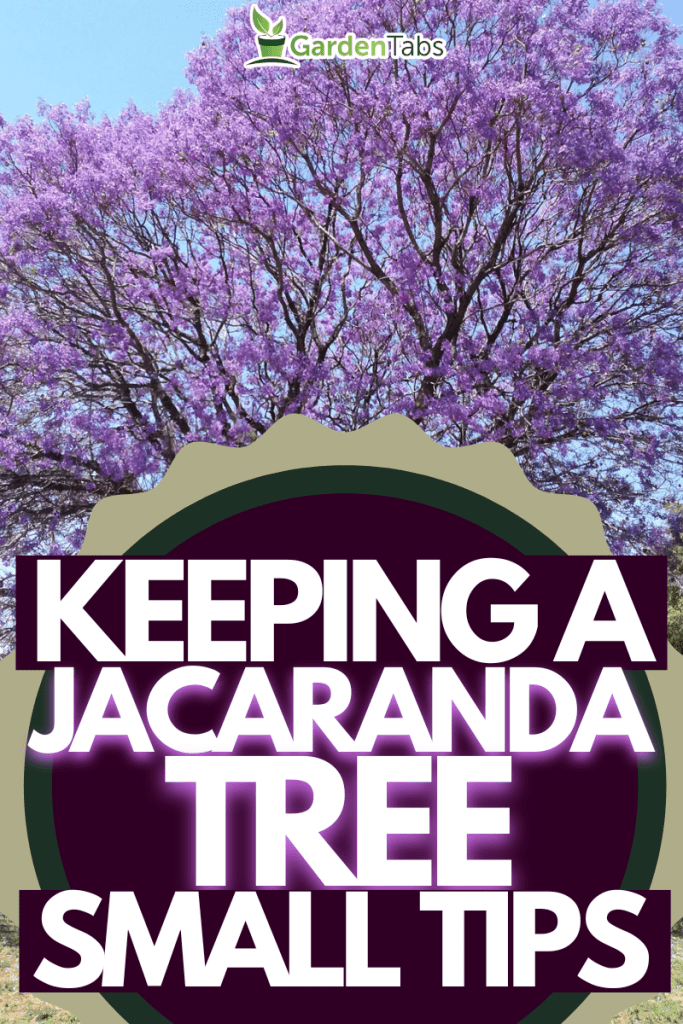Do you long to enjoy the beauty of a jacaranda tree without it dominating your outdoor space?
If so, you're in luck! In this article, we'll discuss best practices for keeping a jacaranda tree small while still enjoying its breathtaking beauty.
And the best part is that these tips are applicable whether you're starting with a young tree or trying to control the size of an existing one!

It is best to prune your jacaranda tree when it is dormant in the winter.
Avoid pruning during the summer months, as this can cause stress to the tree and make it more susceptible to disease.
How to Prune
- To facilitate the growth of stronger branches, you should thin out the canopy.
- Get rid of branches growing from the trunk at an angle that's less than 60 degrees. These branches are likely to break.
- Cut branches that cross over each other, as this can cause damage to the tree.
- Ensure you cut branches at a 45-degree angle, just above a node or bud.
Do not remove more than 25% of the tree's canopy in one pruning session.
Tools for Pruning
Use clean, sharp pruning shears to make a clean cut. Loppers can be used for thicker branches.
Don't use dull or rusty tools, as this can damage the tree and make it more susceptible to disease.
Disinfect your tools with rubbing alcohol or a bleach solution before and after pruning to prevent the spread of disease.
Why Keep a Jacaranda Tree Small?

A mature jacaranda tree may be too large and overwhelming for smaller yards or urban environments.
Keeping a jacaranda tree small can help it fit better in its surroundings and prevent it from becoming a nuisance.
Can You Cut The Top Of A Jacaranda Tree?

Cutting the top of a jacaranda tree, also known as a topping, is not recommended. It can lead to a variety of issues, including:
Stunted Growth
When you top a jacaranda tree, you remove a significant portion of its foliage that's essential for photosynthesis.
Since the tree may fail to make enough food, it can struggle to produce enough energy to support itself, leading to stunted growth and weak branches.
Increased Susceptibility to Disease and Pests
The open wounds created on account of topping can make the tree more vulnerable to disease and pests, as they provide an entry point for pathogens and insects.
Unsightly appearance
Topping a jacaranda tree can result in an unsightly appearance, as it can cause the tree to grow back unevenly and unnaturally.
You should follow proper pruning techniques to maintain the tree's size and shape while promoting healthy growth.
How To Care For A Jacaranda Tree After Pruning
Apply Fertilizer
Applying a slow-release fertilizer helps the jacaranda tree to recover and promotes new growth.
Here are some tips for fertilizing your tree:
- Use a balanced fertilizer with an N-P-K ratio of 10-10-10.
- Fertilize your tree in early spring before the growing season begins.
- Apply the fertilizer evenly around the tree's drip line.
- Water the tree immediately after fertilizing to help the nutrients reach the roots.
- Avoid over-fertilizing, as this can harm the tree.
Remember to follow the manufacturer's instructions for the fertilizer you choose and adjust the amount based on the size of your tree.
Additionally, consider using organic fertilizers, such as compost or manure, to provide your tree with natural nutrients.
Finally, monitor your tree's growth and health throughout the year and adjust your fertilization schedule as needed.
Monitor For Pests and Diseases
Because pruning can create wounds that are susceptible to infection, you should watch for any signs of trouble and take action if necessary.
You can apply a pruning sealant to the cuts on the tree to help prevent disease and insect infestations.
However, some experts recommend against using sealants as they can trap moisture and promote rot.
Clean Up The Debris
Remove all the pruned branches and leaves around the tree, as they can attract pests and diseases.
One common pest that affects jacaranda trees is the whitefly.
These tiny insects feed on the sap of the tree and can cause leaves to turn yellow and drop prematurely.
You can spray the tree with insecticidal soap or neem oil to control whiteflies.
You can also introduce natural predators, such as ladybugs or lacewings, to help control the population.
Water the Tree
Water the tree thoroughly to help it recover from the stress of pruning.
The amount of water required will depend on the size of the tree and the climate in your area. Generally, it is best to water deeply and infrequently.
Overwatering can cause root rot. However, the roots can still rot if the soil has poor drainage.
To prevent root rot, make sure the soil around the tree is well-draining and avoid overwatering.
If you suspect your tree has root rot, you may need to remove affected roots and treat the tree with a fungicide.
How Tall Do Jacaranda Trees Grow?
Jacaranda trees can grow up to 60 feet tall and just as wide, making them excellent shade trees for large landscapes.
Is There a Dwarf Jacaranda Species?
While there are no true dwarf species of jacaranda, some cultivars grow smaller than the typical species.
One such cultivar is the Bonsai Blue, which can grow to be six feet tall and five feet wide. It can grow to be 10 to 12 feet tall and six to eight feet wide when mature.
Another option is the Alba, which has white flowers instead of the typical lavender and grows to about 25 to 40 feet tall and 45 to 60 feet wide.
These varieties may be better for those looking to keep their tree compact.
But it's important to note that even with these smaller cultivars, regular pruning and maintenance will still be necessary to keep the tree manageable.
Choosing the Right Jacaranda Tree Variety
Size
When choosing the right jacaranda tree, you should consider that space that's available.
You should choose a variety that will fit into the available area without becoming overcrowded or causing damage to nearby structures.
Additionally, if you are planting a jacaranda tree in a location with overhead power lines, you will need to choose a variety that will not grow tall enough to interfere with the lines.
Climate
It's also important to consider your area's specific climate and growing conditions when choosing a jacaranda tree variety.
Some varieties are more suited to certain climates than others. This contributes to determining whether the trees stay healthy.
For example, the Bonsai Blue variety is more tolerant of colder temperatures than other jacaranda tree varieties.
To Recap
Establishing a regular trimming schedule is best if you want to keep your jacaranda tree small and healthy.
Avoid cutting the top of the tree since this can create problems such as stunted growth and increased susceptibility to infections.
Choosing a jacaranda tree variety that does not grow very tall can also ease your stress levels when trying to keep the tree at a manageable height.
Lastly, remember to care for the tree after pruning to keep it growing and healthy. Happy gardening!
You may also like:


